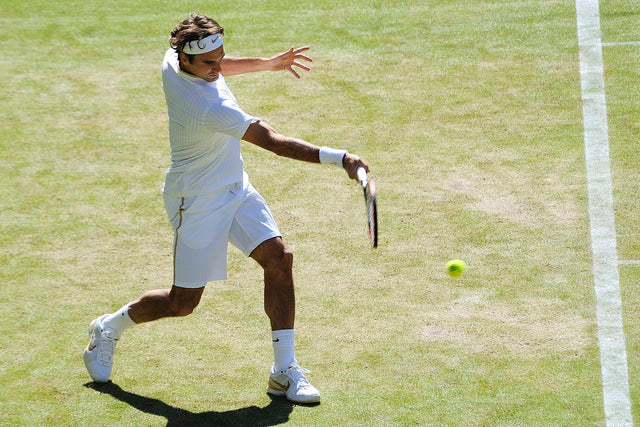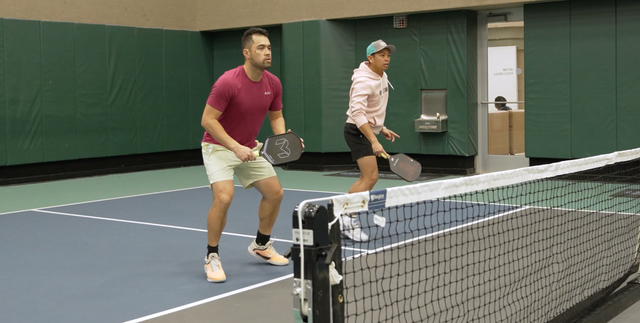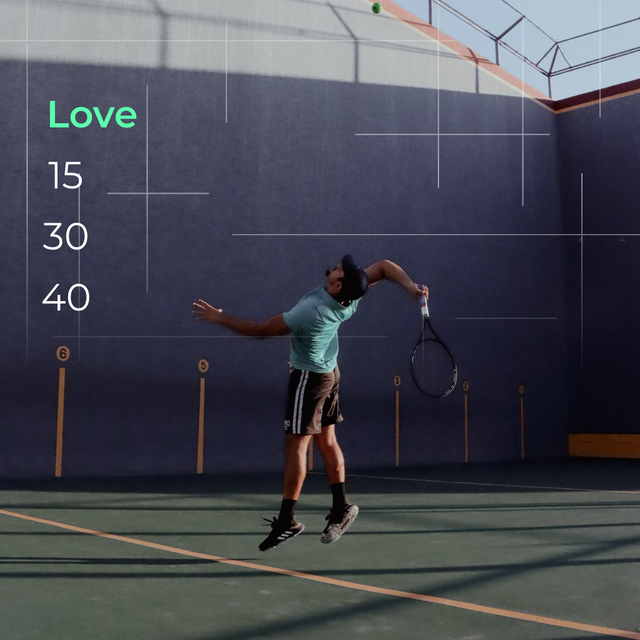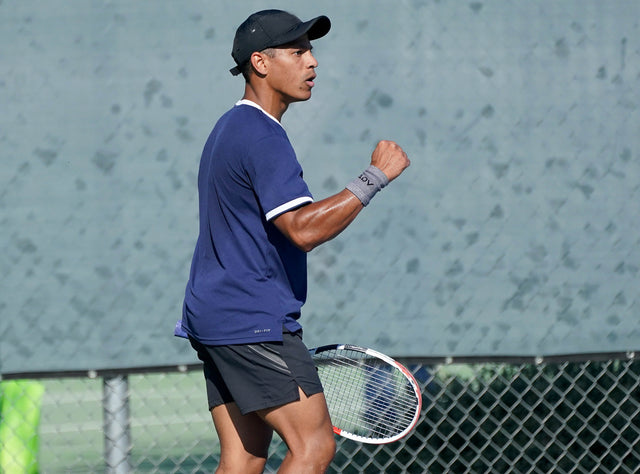Forming Federer: A Timeless Swiss Masterpiece
To be called a legend is now something of a cliché. A moniker dragged out whenever a sportsperson manages to reach any status beyond mediocre. An easy label to apply to someone when caught up in the hype.
Kick the game-winning field goal and you’re instantly a legend. Hit a home run with bases loaded. Yep, that’s right. You’re a legend again. The word has been somewhat cheapened, meaning when used in the correct context, it’s less impactful than it deserves to be.
So, what is a legend? To be categorized as such requires someone to be almost unique in their sporting prowess and ability to connect with fans – someone who will be remembered in 100 years for all the right reasons.
Think LeBron James in his unforgettable pomp. Usain Bolt scorching the field at the Olympics. Or Babe Ruth, the most iconic baseball player the nation has ever seen.
These are names that aren’t only synonymous with greatness but also transcend their sports. Ask the average American about LeBron, and they’ll know the face and the name, even if they never watched him in a game.
In men’s tennis, there have been three recent greats, but only one legend. Djokovic and Nadal are undoubtedly superstars, but Roger Federer takes the mantle of legend within this modern triumvirate of tennis powerhouses - although Novak and Rafa might disagree with this statement!
So why is Federer held in higher esteem than his two rivals? The answer isn’t anything to do with his achievements but more with how he accomplished them. The patented Roger Federer backhand. The cool and calm demeanor. The humility in front of the TV cameras. The privacy of his home life, which never once caused controversy. The grace he showed not just in victory but also in defeat.
Join us as we delve into the legendary Swiss’ career and look at what formed him and why he’ll forever have his name etched into the history of the game, for all the right reasons.
Forming Federer: Natural Excellence Sees Federer Excel
To understand anyone, it’s vital to look at their formative years – the years they used to lay the bedrock for all future success.
To say Federer had a privileged upbringing would be something of an understatement. He was born into the powerful Federer family – a prominent dynasty in Switzerland with roots dating back to the 5th century. A quick search shows that Roger isn’t the only successful family member, with the Federers infiltrating many aspects of Swiss life, including politics and religion.
This natural proclivity for excellence saw Federer excelling at several sports as a boy, but he was particularly talented at soccer and tennis. He would later credit playing various sports for his phenomenal hand-eye coordination. He also idolized sportspeople from numerous niches, stating:
“I always looked up to the Michael Schumachers, Tiger Woods, all the other guys that stayed so long at the top.”
Perhaps more importantly, he idolized three massive tennis stars: Pete Sampras, Stefan Edberg, and Boris Becker. Sampras’ desire to win clearly rubbed off on Federer, as did Edberg’s style, particularly his serve and volley game. But Becker was his biggest inspiration, even bringing a young Federer to tears when he lost.
While many sporting legends showed prowess from the womb, Federer was something of a late bloomer, only picking up a racket seriously at the age of eight. As a comparison, Rafa Nadal was already winning tournaments by that age.
By age 10, Federer had his first coach, taking weekly lessons with Adolf Kacovsky at The Old Boys Tennis Club. His talent was evident even then, with Kacovsky later saying:
“I noticed right away that this guy was a natural talent.”
At this point in his tennis journey, Federer began to develop some of his trademark play. The spectacular backhand, immortalized in the minds of many, was being worked on, while his effortless ability was already painfully clear to his young opponents.
Carter’s Mentorship Molds Young Federer
A time comes when any talented sportsperson needs to pick their focus. The choice for Federer was an easy one:
“I liked tennis the best of all sports. It was always exciting and winning or losing was always in my hands.”
He would then head to a Geneva tennis academy, seemingly unilaterally, without his parents’ input. This single-minded dedication to achieving greatness undoubtedly played a huge role in his future success, but even a great like Federer needs a helping hand from time to time.
While at the academy, Federer would receive coaching from Peter Carter, who became a mentor for the young player. So important was Carter that Federer credits him for his unerring and masterful technique – a hallmark of the Federer style.
Carter also helped a young Federer to overcome his hot-headedness, beginning Federer’s transformation into the calm, relaxed, and rarely flustered player we know today. His future conduct on the court and his relaxed, unflustered, and often humorous interviews can be attributed to Carter’s calming influence.
Sadly, Carter would die in a car crash in South Africa in 2002, one year before the Swiss scooped his first Grand Slam title. The event, as would be imagined, deeply moved Federer, who dedicated his first Grand Slam victory to him, hoping he’d done his childhood mentor proud.
Carter wasn’t the only inspiration to Federer during his earlier years, as the Swiss has also stated that he was hugely inspired by his time as a ballboy at the Swiss Open. At the tournament, he’d get the chance to see great players up close, encouraging him to become like them – and exceed them – during his career.
Just one year after serving as a ballboy, Federer would be in the limelight himself, where he’d remain for longer than any other tennis star in history.
First Silverware Fuels Federer’s Drive for Success
Federer went pro in 1998, aged 21. His junior years were exceptionally successful – a clear indicator of his future greatness. During this time, he’d win several major prizes, and this success only made Federer even hungrier to become a tennis superstar.
Federer’s first taste of competition came at the tender age of 14, in a Grade 2 tournament in his native Switzerland. Just two years later, he was hoisting his first significant silverware, celebrating winning the Wimbledon boys’ singles title and the boys’ doubles title alongside Olivier Rochus. This early victory foresaw the success Federer would have in NW19, where he’d win a record eight titles.
Not content, he also reached the US Open final in the same year, losing to Argentine David Nalbandian – another player who would have great success. He would end his junior career later that year, much to the relief of many of his junior competitors. He’d finish as the world’s number one junior player.
During his junior years, Federer had gone from impetuous youth to all-conquering junior and was well set to burst onto the senior tour – the hard work throughout his childhood was paying off. The foundation had been perfectly laid, and the Swiss now needed to jump to the next level, which he’d do with ease.
Success Breeds Success for Formidable Federer
When Federer began his professional career, the top dog was Pete Sampras – 14-time Grand Slam champion, a record at the time. Even the most optimistic fan of Federer in his early years would have scoffed at the suggestion the Swiss newcomer would obliterate that record, along with two other players from his generation.
Federer would spend two years grafting on the tour before finally reaching the final of his first ATP Tour event – the Marseille Open. He lost. He then went on to lose in the Swiss Indoors final before finally scooping the first prize of his illustrious career, beating Julien Boutter in the final of the Milan Indoor.
This title, while insignificant compared to the championships won since, was the first of 103 ATP Tour tournament wins and undoubtedly an inspiring moment for Federer. By the time the 2003 Wimbledon tournament came around, he had reached an additional 12 finals, winning seven. Not bad for a young player just finding his feet on the Tour.
Federer Feeds on Momentum
It was the 2003 Wimbledon tournament that put Federer on the map, announcing him to the world stage. He would take his first title on the hallowed turf, beating Mark Philippoussis to lift the famous trophy. Federer was now a household name – winner of the world’s most famous Grand Slam tournament, aged just 21 years old.
From there, the sky was the limit. Momentum is a vital aspect of any sportsperson’s success, and Federer made the most of his early momentum by capturing more titles early in his career. But unlike other players, Federer’s momentum never seemed to slow.
The crowd favorite won titles at a startling rate, and it soon became evident that Federer was a generational talent – the man to take the mantle from Pete Sampras and lead the men’s game.
No Outside Distractions
For many professional sports stars, outside influences have an undue effect on their ability. Marital scandals see them appearing in the news for the wrong reasons. Drug rumors place question marks over how deserving they are of greatness. Stories of diva-like behavior cause them to lose the respect of fans and peers. All inevitably cause a drop in their game.
None of this would happen with Federer. Instead, the Swiss’ private life stayed exactly that – private. His marriage to Mirka rarely made the papers, except for the right reasons, such as the birth of two sets of twins. This happy, balanced home life undoubtedly leveled Federer out, allowing him to focus and thrive on the court.
And greatness was certainly something Federer quickly achieved. But he’d have to carve his name into the history books alongside two other giants, making Federer’s generation the most remarkable to ever set foot on the court.
The Golden Generation: Federer Pushed to Greatness
Greatness is often a lonely pursuit. The best don’t usually have peers and instead only see the competition disappearing in the rear-view mirror. To have the company of a fellow great is unusual, and to be accompanied by two peers is almost unheard of.
The world was fortunate enough to see Federer during a golden age for men’s tennis – a time when the Swiss superstar battled against Rafael Nadal and Novak Djokovic for supremacy.
Lesser men would have balked at the challenge, but Federer embraced it. He went toe-to-toe with his two competitors and other big names of the era, like Andy Murray and Stan Wawrinka, and regularly prevailed.
His two big rivals only further augmented Federer’s status as a legend. Without them, he would have shined bright, but questions could have been asked of him. Would he have beaten other great names? Did he get lucky and play during a time devoid of other top talents?
By having Nadal and Djokovic around, these questions were dispelled – nobody could argue that Federer couldn’t hold his own against the best. His place in the golden age of men’s tennis was pivotal, and the Swiss regularly played the starring role.
Federer Retires a Legend
Roger Federer retired from the game in 2022, his last match taking place at the Laver Cup in London. He left with the moniker of the greatest men’s player of all time – greater even than Nadal and Djokovic, despite winning fewer Grand Slam titles.
He won a staggering 103 titles – more than any other man in history – plus he reached a further 54 finals. Twenty of these titles were Grand Slams. But two men from Federer’s generation won more Grand Slams, and they must be credited with inspiring the Swiss to reach the heights he achieved.
Roger Federer managed to do what many others couldn’t. He reached the pinnacle of his sport without making enemies and taking shortcuts. He’ll forever be known as the most extraordinary man to set foot on a tennis court. Well, until the next legend comes around, of course.
🎾 James Wright, Staff Writer












